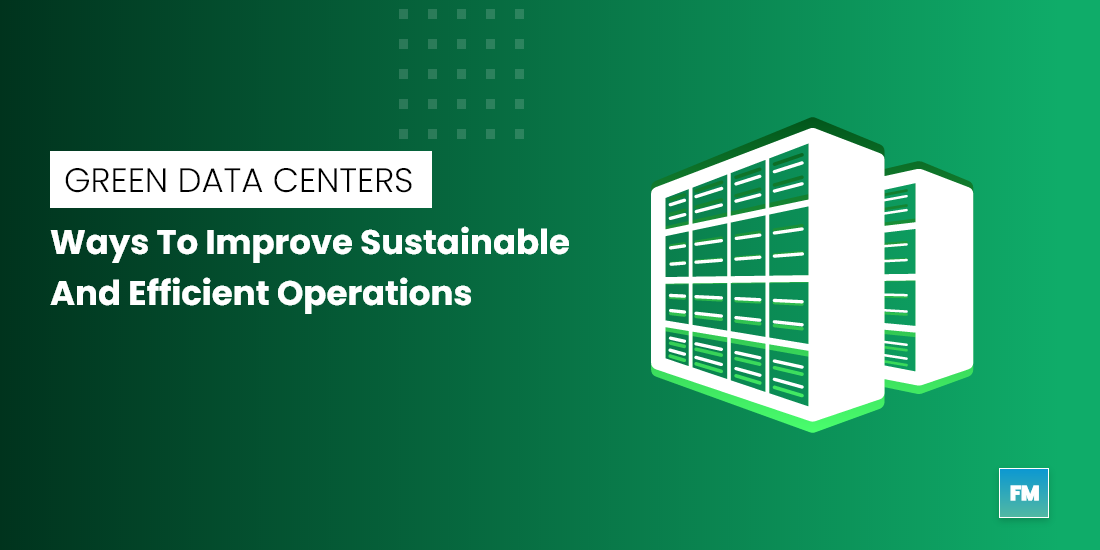Your last movie on Netflix, food that you ordered yesterday or even scented candles you bought on Amazon, could have something common in them. If you have been working in the software or IT domain then yes, you guessed it right. They are all cloud-based services and there is a chance that all your recent purchases might have shared common data centers.
Data centers are well guarded and maintained facilities that house servers to store critical applications and data along with the hardware and software (such as routers, switches, firewalls, storage systems) needed to maintain it. Due to the importance of data security and continuity, they often have a dedicated power backup or captive power generators to support operations all the time.
Businesses of all types and scales rely on data centers to serve their customers, partners or host their own employee data. Except for a couple of technology giants such as Facebook and Google, most mid to large enterprises depend on retail or wholesale colocation services.
Since the growing popularity of subscription services, accessibility to internet-based applications and changing work environment, it is estimated that the number of data centers is expected to grow significantly within the next 5-10 years. A sector that has crossed the market value of $100 billion will see a CAGR of 4-5% during the period of 2021 – 26. The southeast Asia market has a great potential to grab a larger pie from the global market.

Evidently, due to the low-risk environment, outstanding digital infrastructure, and growing regional internet users, Singapore has become the center of attraction for data center constructions. The Arcadis Data Centre Location Index 2021 ranked Singapore the second most attractive city to build data centers, while according to Cushman & Wakefield’s report Singapore stands on 5th rank on the global data center comparison score. Despite the uncertainty of the moratorium, Singapore is expecting a high growth of data centers in recent years.
Among many other factors that are responsible for a profitable operation of data centers, two are increasingly growing as an area of concern for many forward-thinking organizations that are the energy consumption and sustainable operations. Data centers are infamous for their resource requirements, mostly in the form of electrical energy to cool down and maintain the servers. According to the study, in 2018, the world’s data centers consumed 205 terawatt-hours of electricity, equivalent to 1 percent of all electricity consumed that year worldwide.
Although in the last 5-10 years, many data centers have been adopted to greener or renewable energy sources, there is still scope for improvement through server technologies, the economy of scale, and AI-powered operations & maintenance of the servers. Facility management and sustainability goes hand in hand for energy optimization.
In this article, we will explore 3 different ways to improve data center energy efficiency. After the years of efforts on reducing energy consumption, it wouldn’t be wrong to say that all the low hanging fruits have been plucked and it is a time to have a holistic approach from server virtualization technologies to upgrading the hardware and software that are required to monitor and maintain the data centers. Internet of things and AI-powered applications can provide a viable solution for further improvements in operational efficiency.
Data centers are built to ensure high levels of reliability and to achieve optimal performance capabilities. Ironically for such expectations arrangement for backup options would cost an excess power consumption. It’s like taking insurance for precious materials in your storage, the premium would cost you a fortune and make you doubt your decision all the time. But that doesn’t mean you should not opt for it. The best you can do is to evaluate the risk vs benefit situation and make a calculated decision.
- Chiller Optimization:
Large energy consumption of data centers come from cooling load. Servers and hardware components generate heat and require better ventilation to reduce the temperature for optimum performance.
Besides the material changes such as proper insulation for better cooling one can do a lot with the data available from the BMS or AHUs. smart sensors to detect the hot and cold spots and complementary analytics solutions to monitor the airflow in particular areas. AI power applications can be able to find out the optimum temperature needed to handle the data traffic and change the temperature according. This way a single degree reduction in temperature can save thousands of units.
- Space management:
Nowadays space or layout management comes with great flexibility. With the use of a modular design that can be scaled up or down to meet the demand, one can achieve higher efficiency levels and control data center power usage. Space optimization applications can suggest an ideal layout for power consumption in case of expansion or scale-down situations.
Blade servers or larger disk servers are more energy efficient on the server technology side and can process more data per unit power consumption. With the shift toward ‘hyper-scale facilities, uniform computing architecture can be possible for scales up to tens of thousands of servers.
- Synchronization between server capacity and load
It’s an old strategy that is still applicable to new server technology. It is an obvious situation that low capacity utilization would cost more energy consumption per unit usage. But with the proper monitoring and planning tools, one can come closer to the synchronization of the server capacity and demand.
Virtualization of the server is one of the options to improve hardware utilization and eventually reduce the number of power-consuming servers and storage devices. According to the studies, it can also improve server use up to 50 to 60 percent.
If your team is managing O&M of data centers then let us know what measures you have taken for efficient operations. If you think we have missed any important points then suggest us by commenting below.

Leave a Reply